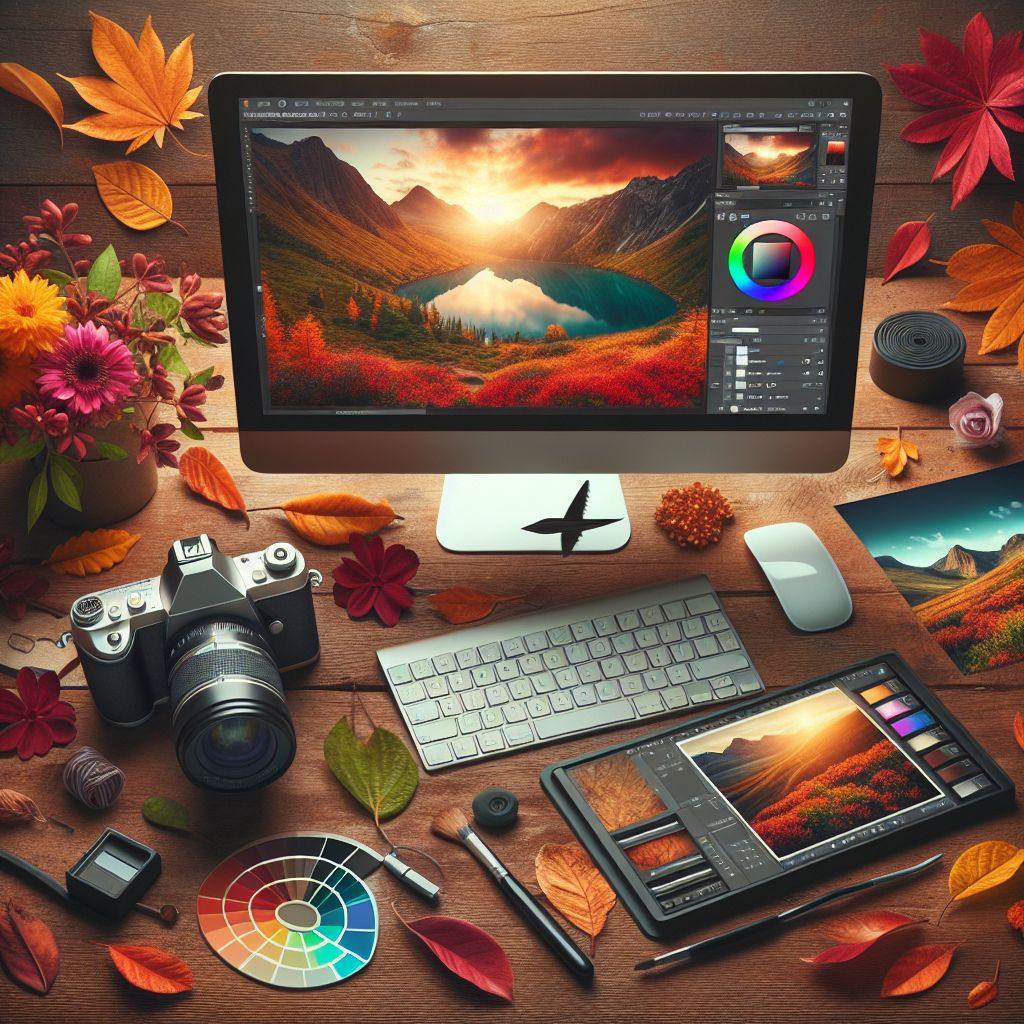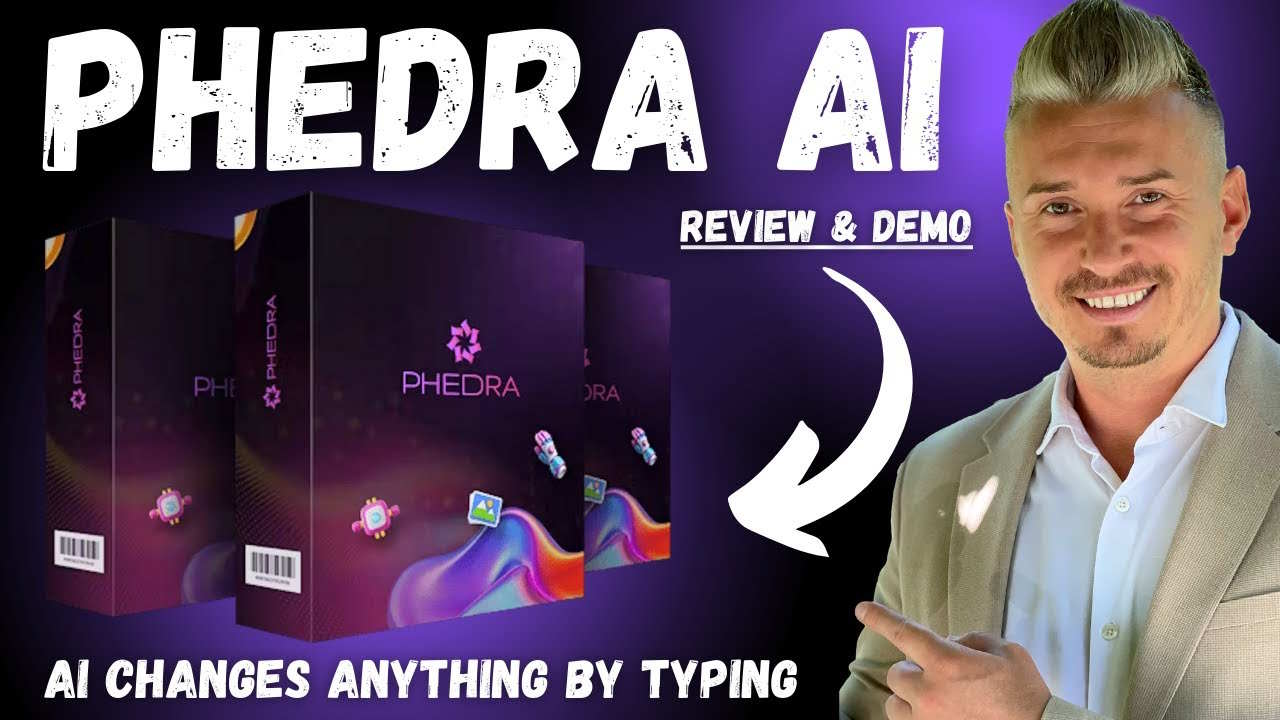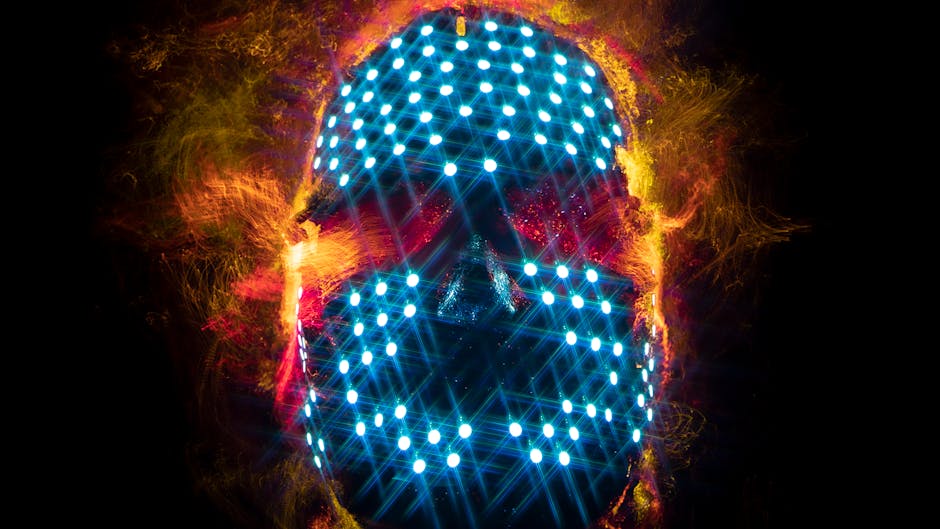Phedra AI vs Photoshop – Which AI Image Editor Wins in 2025?
In the 2025 showdown between Phedra AI and Photoshop, the choice hinges on user needs. Phedra AI shines with its simplicity and cost-effectiveness, while Photoshop offers deep, professional tools driven by AI. Discover which AI image editor best suits your creative pursuits in our detailed comparison…

Key Takeaways
- Phedra AI excels in user-friendliness with an intuitive interface that suits beginners.
- Photoshop offers unparalleled precision and a wide array of advanced tools for professional use.
- Both editors leverage AI for automated tasks, but Photoshop’s AI features are more comprehensive.
- Phedra AI is more cost-effective, while Photoshop’s subscription model may be pricier for long-term use.
- Choosing between the two depends on your specific needs: simplicity versus depth of features.
Phedra AI vs Photoshop: The 2025 Showdown
The world of digital design is evolving at a breakneck pace, thanks in large part to advancements in artificial intelligence. Two titans in the realm of AI-powered image editing are Phedra AI and Adobe Photoshop. Both have carved out significant niches, but which one truly leads the pack in 2025? Let’s dive into a detailed comparison to find out.
Introduction to AI Image Editing
AI image editing is no longer a futuristic concept; it’s a present-day reality that’s transforming how we create and manipulate images. This technology leverages complex algorithms to perform tasks like background removal, object recognition, and even style transfers with minimal human intervention. The result? Faster workflows and creative possibilities that were previously unimaginable.
Advancements of AI in Image Editing
AI’s role in image editing has grown exponentially over recent years. It’s not just about automating repetitive tasks anymore. AI now assists in creating more realistic composites, enhancing image quality, and even generating art from scratch. These advancements have opened up new avenues for creativity, enabling artists to push the boundaries of what’s possible.
Why 2025 is a Pivotal Year for Image Editors
The year 2025 marks a turning point for AI image editors. As technology becomes more accessible and affordable, more artists and designers are adopting these tools. This increased adoption drives further innovation, leading to even more powerful and intuitive editing software. Therefore, understanding the capabilities and limitations of these tools is crucial for anyone involved in digital design.
Feature Comparison
Let’s take a closer look at the features that set Phedra AI and Photoshop apart. Each offers a unique set of tools and capabilities that cater to different types of users.
Phedra AI’s Unique Features
Phedra AI is renowned for its user-friendly interface and simplicity. It’s designed to make complex edits accessible to beginners and hobbyists. Key features include its ability to revolutionize visual creation, as discussed in this Medium article.
- AI-Powered Filters: Apply artistic filters that transform photos into paintings or sketches with a single click.
- Automatic Background Removal: Easily isolate subjects from their backgrounds without needing detailed selections.
- Facial Recognition: Quickly identify and enhance facial features for stunning portraits.
Revolutionary Advancements in Photoshop
Adobe Photoshop continues to lead with its comprehensive suite of tools. Its AI capabilities are integrated deeply into its core functions, offering:
- Neural Filters: Modify expressions, age, gaze, and more with AI-driven adjustments.
- Content-Aware Fill: Seamlessly remove unwanted elements from images, filling gaps intelligently.
- Sky Replacement: Instantly swap skies in photos, adjusting colors and lighting to match the new sky.
Comparing AI Automation in Both Platforms
Both Phedra AI and Photoshop leverage AI to automate tedious tasks, but they do so in different ways. Phedra AI focuses on ease and speed, making it ideal for quick edits. Photoshop, on the other hand, offers more control and precision, which is essential for professional-grade work. Ultimately, the choice between the two depends on your specific needs and expertise level.
User Experience
When it comes to user experience, both editors have distinct approaches. Understanding these can help you decide which one aligns better with your workflow.
Ease of Use: Phedra AI’s Approach
Phedra AI prioritizes simplicity and accessibility. Its interface is clean and intuitive, allowing users to navigate effortlessly. Most importantly, it minimizes the learning curve, enabling users to produce high-quality edits without extensive training. This makes it an excellent choice for beginners or those who prefer a straightforward editing process. For more insights, check out how Phedra AI revolutionizes visual creation.
Output Quality
When evaluating image editors, output quality is a crucial factor. The ability to produce high-quality images with precise details can make or break your creative projects. Both Phedra AI and Photoshop have their strengths, but they cater to different needs and preferences.
Phedra AI emphasizes quick, high-quality edits that are accessible to users of all skill levels. Its AI-driven enhancements ensure that even a novice can achieve impressive results without spending hours tweaking settings. This makes it an attractive option for those who prioritize speed and efficiency over intricate detail.
Image Quality: Phedra AI’s Strengths
Phedra AI shines when it comes to producing visually appealing images with minimal effort. Its AI algorithms are designed to optimize color balance, contrast, and sharpness automatically. Users can apply various artistic filters that transform ordinary photos into captivating artworks, making it perfect for social media content creators and hobbyists.
Moreover, Phedra AI’s facial recognition technology enhances portrait photography by refining skin tones and highlighting facial features. This feature is especially beneficial for those who frequently edit selfies or group photos, as it saves time and delivers consistently high-quality results.
Photoshop’s Unmatched Precision
Adobe Photoshop, on the other hand, is renowned for its unparalleled precision and control. Its advanced tools allow users to make pixel-perfect adjustments, ensuring that every detail is just right. For professional photographers and designers, this level of control is indispensable.
Photoshop’s AI features, such as neural filters and content-aware fill, enable users to manipulate images with incredible accuracy. These tools provide endless possibilities for creativity, allowing artists to bring their visions to life with meticulous detail.
Comparative Analysis of Edited Images
When comparing the edited images from both platforms, it becomes evident that each has its strengths. Phedra AI’s output is vibrant and polished, ideal for quick sharing on digital platforms. Meanwhile, Photoshop excels in delivering images that require intricate detail and customization, making it the go-to choice for professional projects.
Pricing and Affordability
Cost is often a significant consideration when choosing software, especially for freelancers and small businesses. Let’s explore how Phedra AI and Photoshop stack up in terms of pricing and value for money.
Phedra AI’s Pricing Structure
Phedra AI offers a straightforward pricing model, typically involving a one-time purchase or a low-cost subscription. This affordability makes it accessible to a wide range of users, from students to hobbyists. The cost-effectiveness of Phedra AI is a major selling point, especially for those who don’t require the extensive features of Photoshop.
Photoshop’s Subscription Model
Adobe Photoshop operates on a subscription model, which can be more expensive over time. While this might be a drawback for some, it’s important to consider the value it provides. Subscribers gain access to Adobe’s entire suite of creative tools, including Illustrator, Lightroom, and more. This comprehensive package is invaluable for professionals who rely on a diverse set of tools for their work.
Value for Money: Which Offers Better ROI?
The decision between Phedra AI and Photoshop ultimately comes down to your specific needs and budget. If you’re looking for a cost-effective solution for basic editing tasks, Phedra AI offers excellent value. However, for those who require advanced features and integration with other Adobe products, Photoshop’s subscription may be worth the investment.
Integration and Compatibility
Integration and compatibility are key factors that influence the overall user experience. Both Phedra AI and Photoshop offer different levels of integration, which can impact your workflow.
Understanding how each platform integrates with other tools and systems can help you choose the right editor for your needs. For example, exploring the AI-powered image editing capabilities of Phedra AI can offer insights into its integration potential.
Cross-Platform Compatibility of Phedra AI
Phedra AI is designed with cross-platform compatibility in mind. It works seamlessly across various operating systems, ensuring that users can access their projects from any device. This flexibility is particularly beneficial for those who work on the go or need to switch between devices frequently.
Photoshop’s Ecosystem Integration
Photoshop is part of Adobe’s Creative Cloud ecosystem, which offers unparalleled integration with other Adobe products. This integration allows for a smooth workflow, as users can easily transfer files between applications like Illustrator and InDesign. For professionals who rely on multiple Adobe tools, this ecosystem is a significant advantage.
Additionally, Photoshop supports a wide range of file formats, making it compatible with various other software and platforms.
“Photoshop’s integration with Creative Cloud offers a seamless experience for those who need to use multiple Adobe applications in their workflow.”
Third-Party Plugin Support
Both Phedra AI and Photoshop support third-party plugins, which extend their functionality. Photoshop, in particular, has a vast library of plugins available, offering everything from additional filters to specialized tools for niche tasks. This extensibility is one of Photoshop’s key strengths, allowing users to customize the software to fit their specific needs.
Community and Support
The community and support resources available for each platform can significantly impact your experience. A strong community can provide valuable insights, tips, and solutions to common problems.
Let’s explore the community and support offerings for Phedra AI and Photoshop.
Phedra AI’s Community Resources
Phedra AI boasts a vibrant community of users who share tips, tutorials, and resources online. Forums and social media groups dedicated to Phedra AI allow users to connect, exchange ideas, and solve common issues. This supportive environment is invaluable for beginners who may need guidance as they navigate the software’s features.
Besides that, Phedra AI offers an extensive library of online tutorials and documentation. These resources cover everything from basic editing techniques to advanced AI features, ensuring that users can find the information they need to enhance their skills.
Photoshop’s Support Networks
Adobe Photoshop has a long-standing reputation for providing excellent support through its vast network of resources. The Adobe community forums are bustling with activity, where users can ask questions, share insights, and collaborate on projects. With millions of users worldwide, finding solutions to even the most complex issues is often just a forum post away.
Moreover, Adobe offers dedicated customer support for its subscribers, providing direct assistance for technical problems. This level of support is crucial for professionals who rely on Photoshop for their livelihood and need prompt solutions to any issues they encounter.
Workshops and Learning Resources
Both Phedra AI and Photoshop offer workshops and learning resources to help users get the most out of their software. Phedra AI frequently hosts webinars and online classes, where users can learn from experts and improve their skills. These sessions are often interactive, allowing participants to ask questions and receive real-time feedback. For more insights on how Phedra AI is revolutionizing visual creation, you can check out this Medium article.
Adobe Photoshop, on the other hand, is known for its extensive range of learning materials, including video tutorials, articles, and eBooks. Adobe also partners with educational institutions to offer courses that cover everything from the basics of photo editing to advanced digital art techniques.
The Verdict: Which Should You Choose?
Choosing between Phedra AI and Photoshop ultimately depends on your specific needs, budget, and level of expertise. Both editors offer unique advantages, but understanding their strengths and limitations will help you make an informed decision.
Phedra AI is ideal for those who prioritize simplicity, affordability, and ease of use. Its intuitive interface and AI-driven features make it accessible to beginners and hobbyists who want to create stunning images without a steep learning curve.
Target Audience for Each Editor
Phedra AI is best suited for casual users, social media content creators, and those new to digital design. Its focus on user-friendliness and affordability makes it an attractive option for students and hobbyists.
Photoshop, on the other hand, is tailored for professional photographers, graphic designers, and artists who require advanced tools and precise control. Its comprehensive features and integration with other Adobe products make it the go-to choice for industry professionals.
Best Use Cases Based on Features
If you’re looking to quickly enhance photos, create social media content, or apply artistic filters, Phedra AI is the perfect tool for the job. Its automated features save time and deliver impressive results with minimal effort.
For tasks that demand intricate detail, such as photo retouching, compositing, or creating complex digital artworks, Photoshop’s advanced tools and precision are unmatched. Its ability to handle large projects and integrate with other software makes it indispensable for professional work.
Final Recommendation
In conclusion, both Phedra AI and Photoshop have their place in the world of digital design. Your choice should be guided by your specific needs and goals. If you’re just starting out or need a cost-effective solution for quick edits, Phedra AI is an excellent choice. However, if you’re seeking a powerful, all-encompassing tool for professional projects, Photoshop remains the industry standard.
Frequently Asked Questions
Here are some common questions that arise when comparing Phedra AI and Photoshop:
How does AI enhance image editing in 2025?
AI enhances image editing by automating repetitive tasks, improving image quality, and offering creative tools that were previously unavailable. In 2025, AI can identify objects, enhance facial features, and apply complex filters with ease, making the editing process faster and more efficient.
Moreover, AI-driven tools allow users to experiment with new styles and techniques without extensive knowledge or skill. This democratizes the creative process, enabling more people to participate in digital art and design.
What are the main differences between Phedra AI and Photoshop?
The main differences lie in their target audience, pricing models, and feature sets. Phedra AI is designed for ease of use and affordability, making it accessible to beginners and casual users. Photoshop, however, offers advanced tools and precision, catering to professionals who require comprehensive editing capabilities.
Additionally, Photoshop’s integration with Adobe’s Creative Cloud ecosystem provides a seamless workflow for those who use multiple Adobe products.
Which editor is more suitable for beginners?
Phedra AI is more suitable for beginners due to its user-friendly interface and straightforward features. Its intuitive design allows users to quickly learn the basics of image editing and start creating without feeling overwhelmed.
How does pricing influence the decision between these editors?
Pricing plays a significant role in the decision-making process. Phedra AI’s cost-effective model makes it an attractive option for those on a budget or who only need basic editing tools. In contrast, Photoshop’s subscription model can be more expensive over time, but it offers access to a comprehensive suite of creative tools that provide significant value for professionals.
Ultimately, the choice depends on your budget and the specific features you require for your projects.
What are the potential future trends in AI image editing?
The future of AI image editing is promising, with continued advancements in machine learning and neural networks. We can expect even more sophisticated tools that offer greater automation and creativity. AI may soon be able to understand artistic intent, allowing for more personalized and intuitive editing experiences.
Additionally, as AI technology becomes more accessible, we can anticipate a wider adoption of AI-powered tools across various industries, further revolutionizing the way we create and manipulate digital images.
These trends suggest that AI will continue to play a crucial role in the evolution of digital design, offering exciting possibilities for artists and designers worldwide. For instance, AI-powered image editing tools are revolutionizing visual creation.



